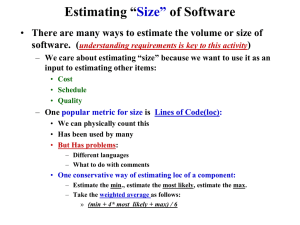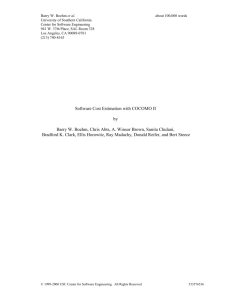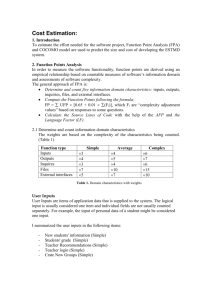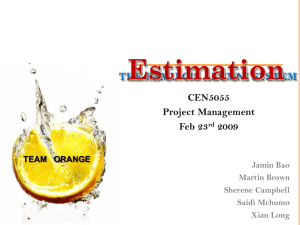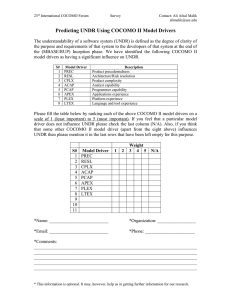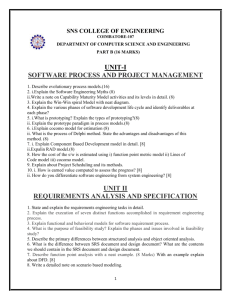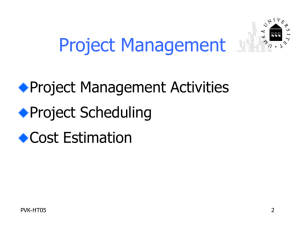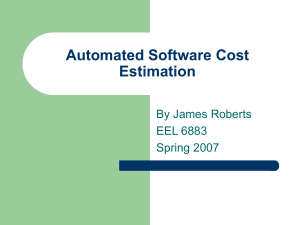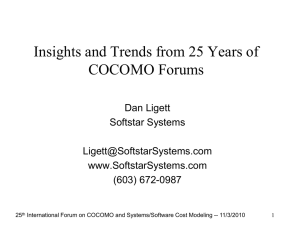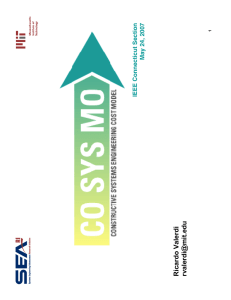Software Engineering Planning & Estimation Lecture Slides
advertisement
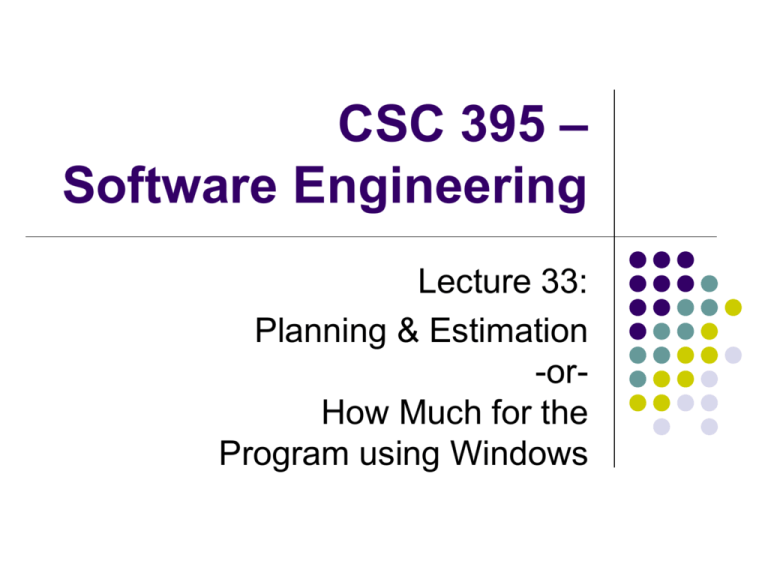
CSC 395 – Software Engineering Lecture 33: Planning & Estimation -orHow Much for the Program using Windows Estimating Duration & Cost Accurate estimations crucial Companies need to make $$$ Customers want reasonable & reliable prices Estimates depends on many, many variables Many are unpredictable (e.g., human factors) Programmers quit or “get hit by bus” Get freak Oct. snow storm that shuts down city Programmer pairs differ in effectiveness & productivity (up to 28x) General models impossible to create Planning and Process Estimates improve as more details known Anyone confused by this point, give up Planning and Process Properly engineered, estimate stays static as range shrinks Start of requirements, estimate is $1 million After requirements, estimate stays $1 million Likely actual cost is in $0.25M - $4M range Actual cost range shrunk to $0.5M - $2M After analysis, estimate still $1 million But cost range reduced to $0.67M - $1.5M This is also when contract is finalized! Estimating Product’s End Size Several metrics commonly relied upon Includes “fudge factors” that can be tweaked Use measurable quantities for simple calculations Computed early in life cycle for use writing contracts Factor unique to each group and situation Tracking allows more precise estimates over time FFP for medium-sized data processing projects Function points used in many places FFP Calculation Counts files (Fi), flows (Fl), & processes (Pr) Size (S) estimated as S = Fi + Fl + Pr Cost (C) estimated with S & efficiency factor b C=bS Function Points Metric Expressed in units of “function points” Calculated using several inputs: Number of inputs (Inp) Number of outputs (Out) Number of Inquiries (Inq) Count of master files (Maf) Interfaces in system (Inf) FP = 4 • Inp + 5 • Out + 4 • Inq + 10 • Maf + 7 • Inf Complex FP Calculation 1. Classify each of the individual components (e.g., each Inp, Out, Inq, Maf, Inf) Assign appropriate number of function points Sum is UFP (unadjusted function points) Complex FP Calculation 2. Compute DI (degree of influence) Sum of 14 factors ratings Each rating will be integer between 0 (“not present”) & 5 (“strong influence throughout”) Complex FP Calculation 3. 4. Compute TCF (total complexity factor) TCF = 0.65 + 0.01 DI FP (number of function points) is: FP = UFP TCF Analysis of Metrics Amazingly, FP often calculated correctly Moreover, cost-per function point meaningful! Maintenance can cause inaccuracies Major changes possible without changing Fi, Fl, Pr, Inp, Out, Inq, Maf, Inf Cost Estimation Techniques Expert judgment by analogy Bottom-up approach Compare target product to completed products Provides a WASG (wild *** scientific guess) Studies show large groups eerily accurate Split into smaller components (e.g., classes) Estimate costs for each component Algorithmic cost estimation models Most commonly used approach COCOMO Set of estimation models developed in 1981 Updated in 1995 for modern development tools Both contain 3 models differing in complexity Original design consists of three models: Macro-estimation model for whole product Intermediate COCOMO Micro-estimation model examining product details Intermediate COCOMO Estimate product length in KDSI Estimate of 1000s of source instructions Select development mode Size Innovation Deadline Environment Small Little Not tight Stable Semi-detached Medium Medium Medium Medium Embedded Greater Tight Complex interfaces Organic Large Development mode determines coefficients used a b Organic 3.2 1.05 Semi-detached 3.0 1.12 Embedded 2.8 1.20 Intermediate COCOMO Compute development (nominal) effort Effort = a (KDSI)b Compute C (effort adjustment factor) Effort computed as person-months Equals the product of up to 15 cost-drivers Development time (in person-months) is: Effort C COCOMO Cost Drivers Using COCOMO Revision (COCOMO II) calculated similarly Estimated time then used to compute: But much, much more complex Development costs & schedules Phase and activity distributions Maintenance costs after delivery Ultimately based upon initial size estimate End result only as good as initial estimate For Next Lecture Consider maintenance of code Ultimately where the real money is made or lost Where majority of time in project is spent But least interesting for software engineering Much determined by decisions in development
